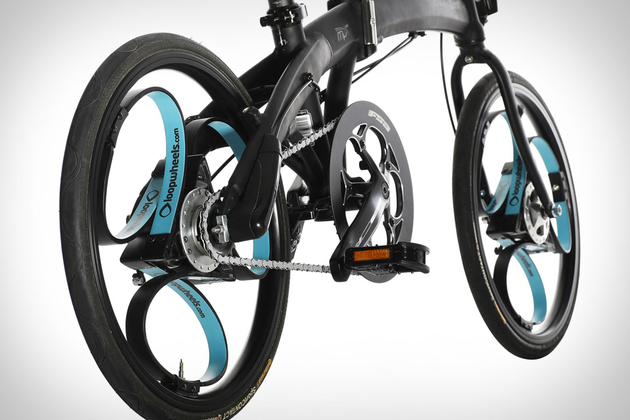
People are fond of saying that you can’t reinvent the wheel, but if you take a look a the LoopWheel, you realize that’s not entirely true. The device uses a regular, off the shelf tire, rim and hub, but it replaces the common spokes with a flexible carbon-composite system that gives suspension directly to the wheel. By making the new loopy “spokes” flexible, the LoopWheel’s hub is able to go off-center by as much as 45mm (1.7 in.), effectively giving it a suspension with 1.7in of travel. Granted, that’s not mountain bike material, but the LoopWheel isn’t intended as such. Currently only being produced in a 20in. size (a small bicycle wheel size), they’re intended to be used in folding bikes or any other compact bikes that wouldn’t normally be able to fit a regular suspension system.
Like many innovative items, the LoopWheels are on Kickstarter, but they’re fully funded. If you still want to get in on the action, it’ll cost you 490£, or roughly $763.
Hit the jump for a video of the wheels in action, plus links.










